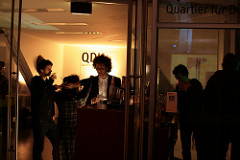Imagine you could avoid an animal experiment if you would find the result of the experiment online?

Press Release/Transinsight:
the knowledge-based semantic search engine www.Go3R.org is now available online. It enables information transparency for the prevention of animal testing.
In only four months development time, Transinsight from Dresden, Germany, succeeded in making available online Go3R, the worldwide first knowledge-based search engine for alternative methods to animal experiments. Via www.Go3R.org, scientists from all over the world can take advantage of the benefits of semantic searches for the area of alternative methods in accordance with the 3Rs principle. The Search engine can from now on used as Beta version.
The so-called 3Rs principle developed by Russell and Burch in 1959 stands for Replacement, Reduction and Refinement. It describes scientific methods that can either replace animal experiments, or reduce animal numbers or refine the suffering of the animals during the procedures. In the European Union, compliance with the 3Rs principle is legally required. In accordance with the EU Laboratory Animal Directive, just as with the German Animal Welfare Act, animal experiments may only be performed if the scientific goal pursued cannot be achieved by any other means, i.e. in totally non-animal procedures, or in methods using fewer animals or entailing less animal suffering.
In practice, however, this legal requirement oftentimes is not met, because the scientists and the responsible authorities are unaware of 3Rs alternatives that would exist to the respective foreseen animal experiment. Queries for alternative methods are time consuming and cumbersome, and this situation has possibly even become worse in the era of the internet. Additionally, at the end of a search, it remains unclear whether all relevant information sought for was indeed retrieved. This is where the search engine Go3R sets in.

